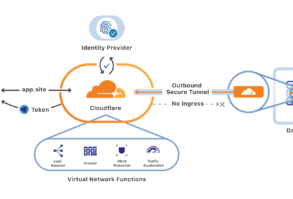As cybersecurity threats continue to evolve, it is imperative for businesses and individuals to stay ahead of the curve in order to prevent data breaches and ransomware attacks. In this article, we will be discussing ransomware, vulnerabilities and outlining the best practices for protecting against them.
Understanding the Latest Ransomware Vulnerabilities
Ransomware attacks are a type of malware that encrypts a victim’s files and demands payment in exchange for the decryption key. The latest ransomware vulnerabilities exploit weaknesses in software and hardware systems, as well as human error.
One of the most common ways ransomware infiltrates systems is through phishing attacks. Cybercriminals send fraudulent emails or messages to unsuspecting victims, enticing them to click on a link or download an attachment that installs the malware onto their device.
Another vulnerability is the exploitation of unpatched software or firmware vulnerabilities. Cybercriminals use these vulnerabilities to gain unauthorized access to systems and execute ransomware.
Best Practices for Protecting Against Ransomware
- Implement Strong Passwords and Two-Factor Authentication
Using strong passwords and two-factor authentication can prevent cybercriminals from gaining unauthorized access to systems. Strong passwords should be at least 12 characters long and contain a mix of upper and lower case letters, numbers, and special characters. Two-factor authentication requires users to provide an additional piece of information, such as a code sent to their mobile device, in addition to their password.
- Keep Software and Firmware Up-to-Date
Regularly updating software and firmware can prevent ransomware from exploiting vulnerabilities. Companies should establish a patch management policy to ensure all systems are up-to-date and protected against the latest threats.
- Train Employees on Cybersecurity Best Practices
Employees are often the weakest link in cybersecurity. Phishing attacks can be prevented through employee education and training on how to identify suspicious emails or messages. Employees should also be trained on best practices for password management, two-factor authentication, and other cybersecurity measures.
- Use Anti-Virus and Anti-Malware Software
Anti-virus and anti-malware software can detect and block ransomware before it can execute on a system. Companies should invest in reputable software and ensure it is kept up-to-date.
- Back Up Data Regularly
Regularly backing up data can prevent data loss in the event of a ransomware attack. Backups should be stored in a secure location and tested regularly to ensure they can be restored in the event of a disaster.
Conclusion
Protecting against the latest ransomware vulnerabilities requires a multi-layered approach that includes strong passwords, two-factor authentication, regular software and firmware updates, employee education and training, anti-virus and anti-malware software, and regular data backups. By implementing these best practices, businesses and individuals can reduce their risk of falling victim to ransomware attacks and protect their sensitive data.






